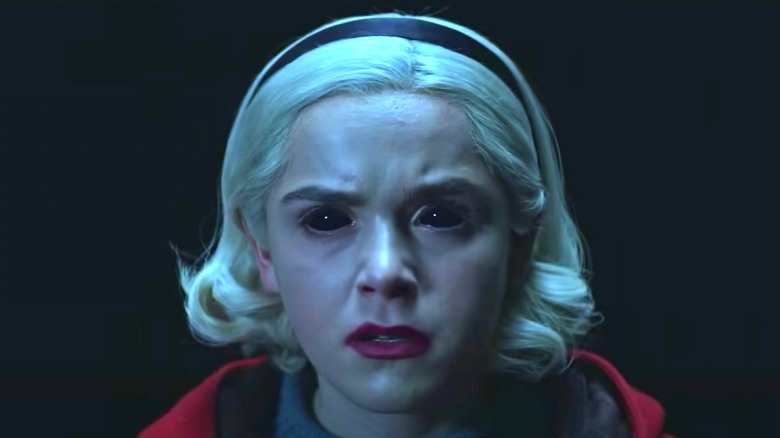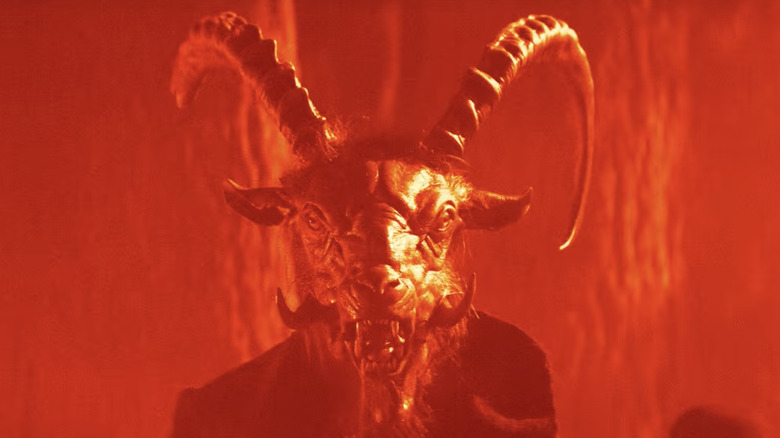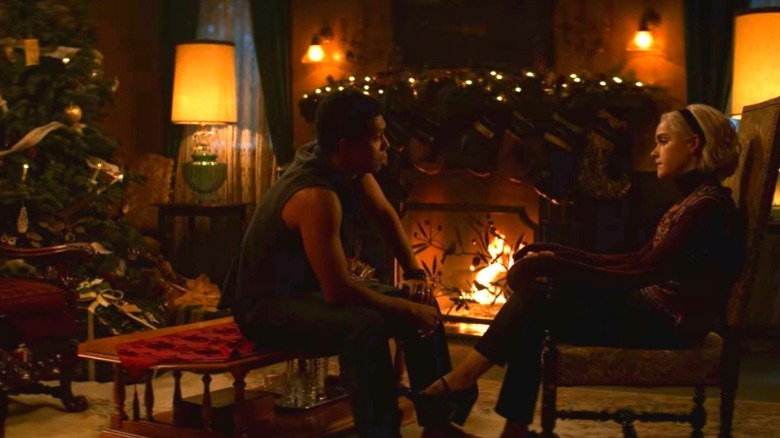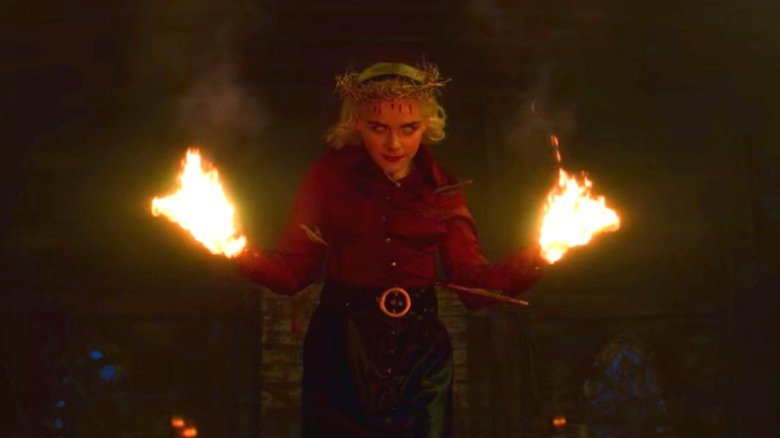How Real Was The Witchcraft In Netflix's Chilling Adventures Of Sabrina?
Sabrina Spellman has had a long history of practicing magic in pop culture. First appearing in "Archie's Madhouse" in 1962, the teenage witch began a long journey of magical hijinks and hiding her true nature from her boyfriend Harvey (via Archie Comics). This spawned her own comic "Sabrina the Teenage Witch," as well as the sitcom starring Melissa Joan Hart in the '90s. Typically, Sabrina was portrayed as a funny yet harmless witch whose conflicts were easily resolved. However, that image received a slight makeover in the 2010's, with the release of Roberto Aguirre-Sacasa's comic "Chilling Adventures of Sabrina" (via The Hollywood Reporter).
Sabrina's origins were retold with a horror slant on the story. Instead of harmless fun, Sabrina became a witch who was raised to praise The Dark Lord and delve into the occult. It was from this comic that Netflix adapted their series of the same name and brought on Aguirre-Sacasa to run it. As Aguirre-Sacasa was also responsible for the gritty retelling of "Archie" in The CW's "Riverdale," this was a logical step.
"Chilling Adventures of Sabrina" honors her origins as a well-intentioned teenager trying to have it all. But the "chilling" aspect of the series centers on the dark magic the Spellman clan partakes in. From exorcisms to serving the devil, Netflix's dark view of witchcraft sets it apart from its predecessors when it comes to realism.
Witches' relationship with the devil stretches back a long time
Witches in properties such as "Motherland: Fort Salem" and the tragically short-lived "The Secret Circle" are portrayed as benevolent, using their magic for good. However, this is a modern interpretation. Witches have a long history of delving into dark magic.
The Salem Witch Trials of the 1600s viewed witches as evil, and were some of the most famous instances of executing people for dealing with the devil. Fear of female sexuality was prevalent and was expanded upon in Robert Eggers' film "The Witch." Famous for his commitment to authenticity of the time, Eggers took much of the dialogue in the film from real life accounts (via IndieWire). This makes Thomasin's (Anya Taylor-Joy) accusations of witchcraft all that more real. Witches were believed to gain their power through fealty to the devil, and once they signed their name in his book, they were able to access many disturbing abilities. Thomasin proves this by signing her name and gaining the power to levitate.
"Chilling Adventures of Sabrina" leans into the concept of worshiping The Dark Lord as well. The series utilizes well-known imagery such as The Dark Lord appearing in the form of a goat. Sabrina (Kiernan Shipka) must also sign her name in his book so he can call upon her at any time. Sabrina's refusal to sign the book is the main conflict of the series, as she attempts to retain her autonomy as well as her power.
Wiccan lore such as holidays are followed closely
In addition to occultism, "Chilling Adventures of Sabrina" also explores real-life Wiccan rituals. In Season 1's Christmas special "A Midwinter's Tale," the Spellman family goes over all the do's and don'ts of the Winter Solstice. Zelda (Miranda Otto) scolds Sabrina for calling their tree a Christmas tree. The meaning of the tree is instead attached to Yule time traditions which celebrate the longest night of the year. The yule log is another significant inclusion of the episode, supposedly warding away any malevolent happenings when lit.
Yule — or the Winter Solstice — is celebrated by modern day witches. One issue of Teen Vogue interviewed different self-proclaimed witches as they described their rituals for the holiday. This is just one celebration that the Netflix series honors. In Season 2, Sabrina and her peers commemorate the Roman holiday of Lupercalia. This holiday is a variation of Valentine's Day, though instead of romance it delves more into the carnal aspects of human nature (via History).
The historical inclusions in "Chilling Adventures of Sabrina" are an important aspect of the show, creating a more realistic world of witches not often explored.
Of course, the series takes liberties as well
Though "Chilling Adventures of Sabrina" has many realistic elements, it is, at its heart, a show about the supernatural. Sabrina is born of two worlds: her father was a witch, while her mother was mortal. This puts her in the unprecedented camp of being able to choose how she lives her life. Sabrina wants to keep her free will, and disagrees with signing her name away to The Dark Lord.
Though she is on the fence, she attends the witch high school known as The Academy of Unseen Arts. There, she learns practices such as potion-brewing and summoning spells. The magic in the series bends the established lore of witchcraft and goes so far as to proclaim that Sabrina is actually the spawn of the devil. In order to conceive a child, Sabrina's mother Diana (Annette Reilly) had relations with the devil, leading to Sabrina becoming the Antichrist. Sabrina can harness unbelievable power like hellfire, and feats of magic that witches have not seen before. These displays of witchcraft make for entertaining television, but are less based in lore.
The fun of "Chilling Adventures of Sabrina" is how far the show is pushed into the realms of the unbelievable. The series balances humor and horror, and thrusts Sabrina into impossible situations that are a joy to watch.



